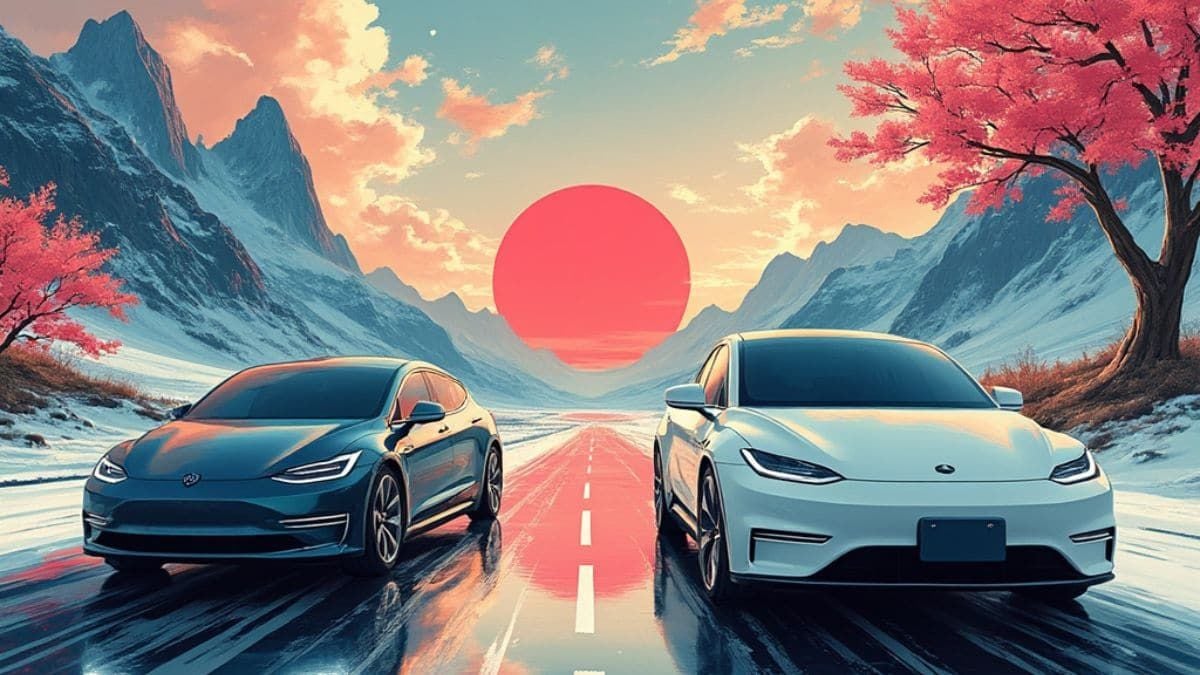China isn’t becoming a threat to Western car makers anymore; it is moving beyond them, and the fight is particularly fierce between China and Japan. Toyota's profits have dropped over $4B, Nissan had to lay off 9K workers, and Honda is down 15%. In China alone, Toyota, who remains, for now, the automotive world leader, is down 10%.
China’s BYD appears to be the biggest cause of this decline, while Chinese makers Zeekr and Nio are also doing damage. All three Chinese vendors are reporting strong sales growth in Europe (they are mostly barred from entering the US due to very high Tariffs).
This fall-off is due to three reasons. The Chinese manufacturers have largely fixed their initial quality and design issues. China more aggressively supported its Auto Industry than any other government, and thanks to China buying up a lot of the raw materials needed for EV manufacturing the Chinese cars represent one of the best values in the EV market today.
Quality
China, like Japan did before the 1970s, had a huge quality problem, and their inexpensive vehicles were not well built. Japan had this same problem, and then, working with the US manufacturers and developing their unique quality policies, Japan turned that negative around, and by the mid-1970s, the quality of their cars rivaled all others. In the latter part of the last century, they nearly took the US car makers out by providing cheaper cars.
I still recall a GM CEO looking out at the parking lot of his headquarters building and seeing row after row of Chinese cars driven by GM employees (who could buy GM cars at high discounts) and setting a policy of no more Japanese cars some time ago. (By the way, this is a terrible way to deal with a competitive problem, as you want your people to use competing products so they understand where the feature and quality bar are). And forcing employees to buy your cars doesn't inspire confidence in the products.
China has been making similar advancements, though without much, if any, US help. While their quality is not quite up to today’s Japanese quality standards, it is generally world-class now (there are some exceptions), and the increased value is driving sales to Chinese brands.
China’s BYD recently released an EV that can become amphibious in emergencies (likely handy in States like Florida). Outside of military vehicles and the WaterCar line, they are pretty much alone with this feature.
Chinese Government Support
The Chinese Government supports its industries far more than most other governments, particularly the US. A few years back, I spoke to a US company investing in China, and they were impressed with the Chinese Government support they were offered, which sweetened the deal for them to build out manufacturing capacity in China.
Granted, this support tends to create global security and privacy concerns, but, so far, there hasn’t been any real evidence that China is doing anything underhanded with these vehicles. However, the country has been accused of dumping in the past. The other countries are trying to mitigate this Chinese threat through Tariffs, but Tariffs aren’t a magic bullet and should be used sparingly because they tend to cover up this problem rather than correct it. If those Tariffs and this is likely given a potential massive trade war, are ever dropped, the US and European car companies are screwed.
Incredible Chinse Car Value
China started buying up access to raw materials like Rare Earth metals used in EV manufacturing well over a decade ago, anticipating its EV future. In addition, a large number of automotive parts are built in China, giving it an advantage in logistics and shipping costs when it builds its own cars in the country.
The result is that they can maintain decent margins while underpricing their Japanese competitors. Much like Japan was able to undercut the pricing of US and European car makers when they moved to broad market sales in the 1970s, China is doing the same thing to them with ever-better vehicles at ever-lower prices.
Wrapping Up:
Using a formula similar to Japan’s, China is bringing increasingly better EVs to the market. Japan seems to be struggling to pivot to EVs while being more focused on more costly plug-in hybrids, which, despite the fact these hybrids are likely better for most people, is causing them to fall well behind China’s automotive efforts.
If Japan and the rest of the world don’t take this Chinese threat more seriously and spin up similar government support, China isn’t just likely to take the automotive business, again, from US Automakers, but they could end up being the only company that still builds consumer-focused cars.
Rob Enderle is a technology analyst at Torque News who covers automotive technology and battery development. You can learn more about Rob on Wikipedia and follow his articles on Forbes, X, and LinkedIn.





